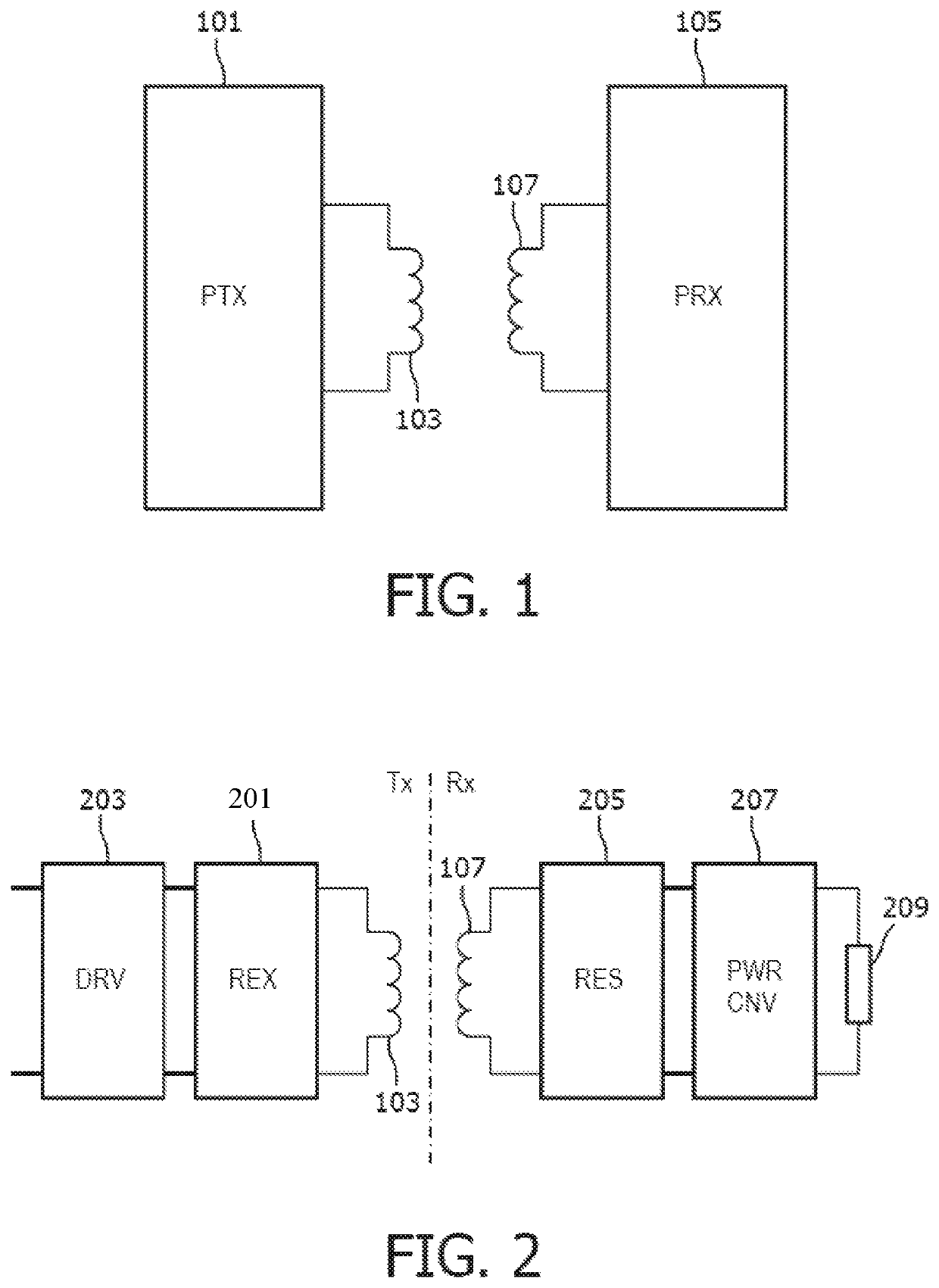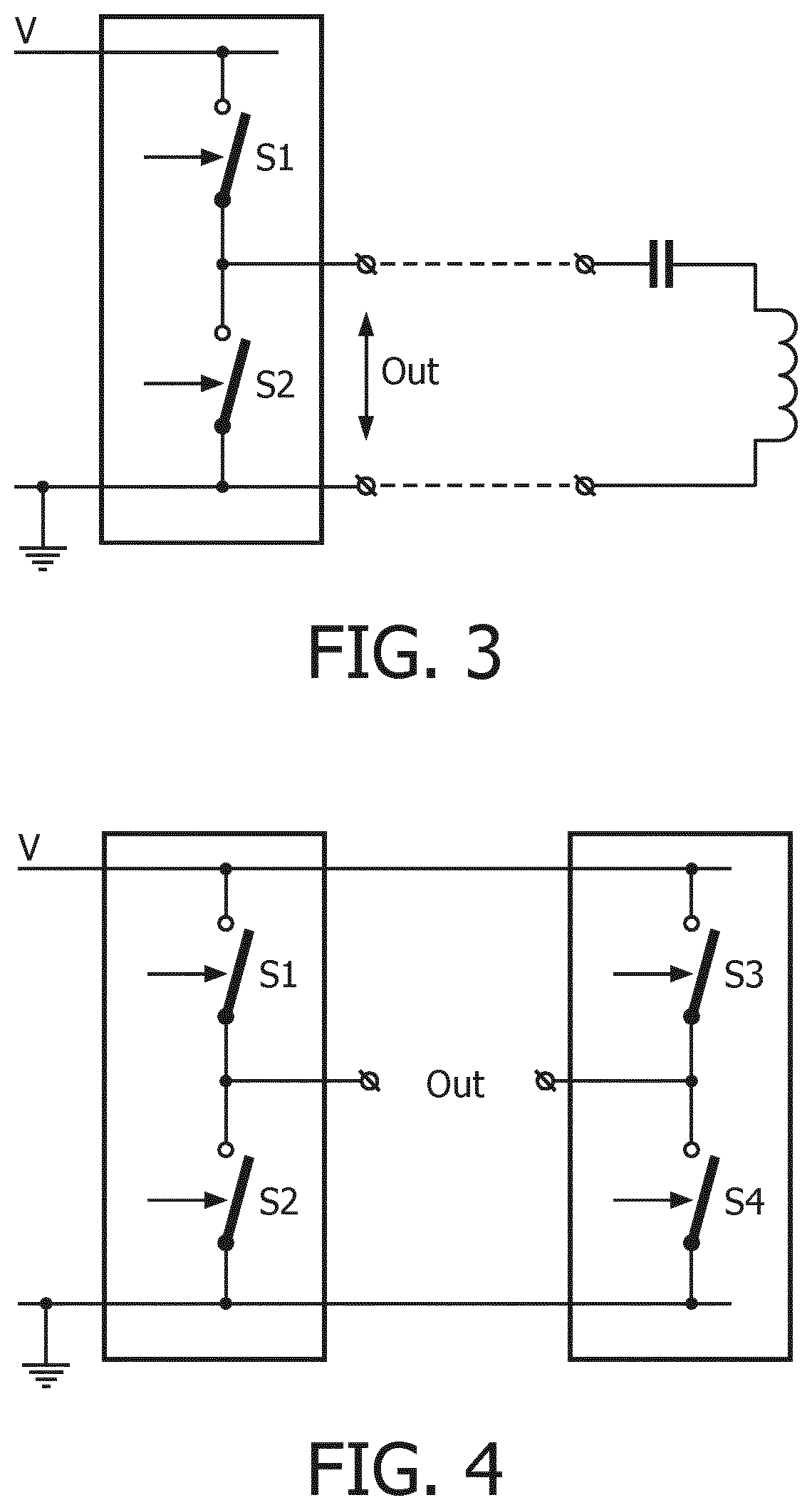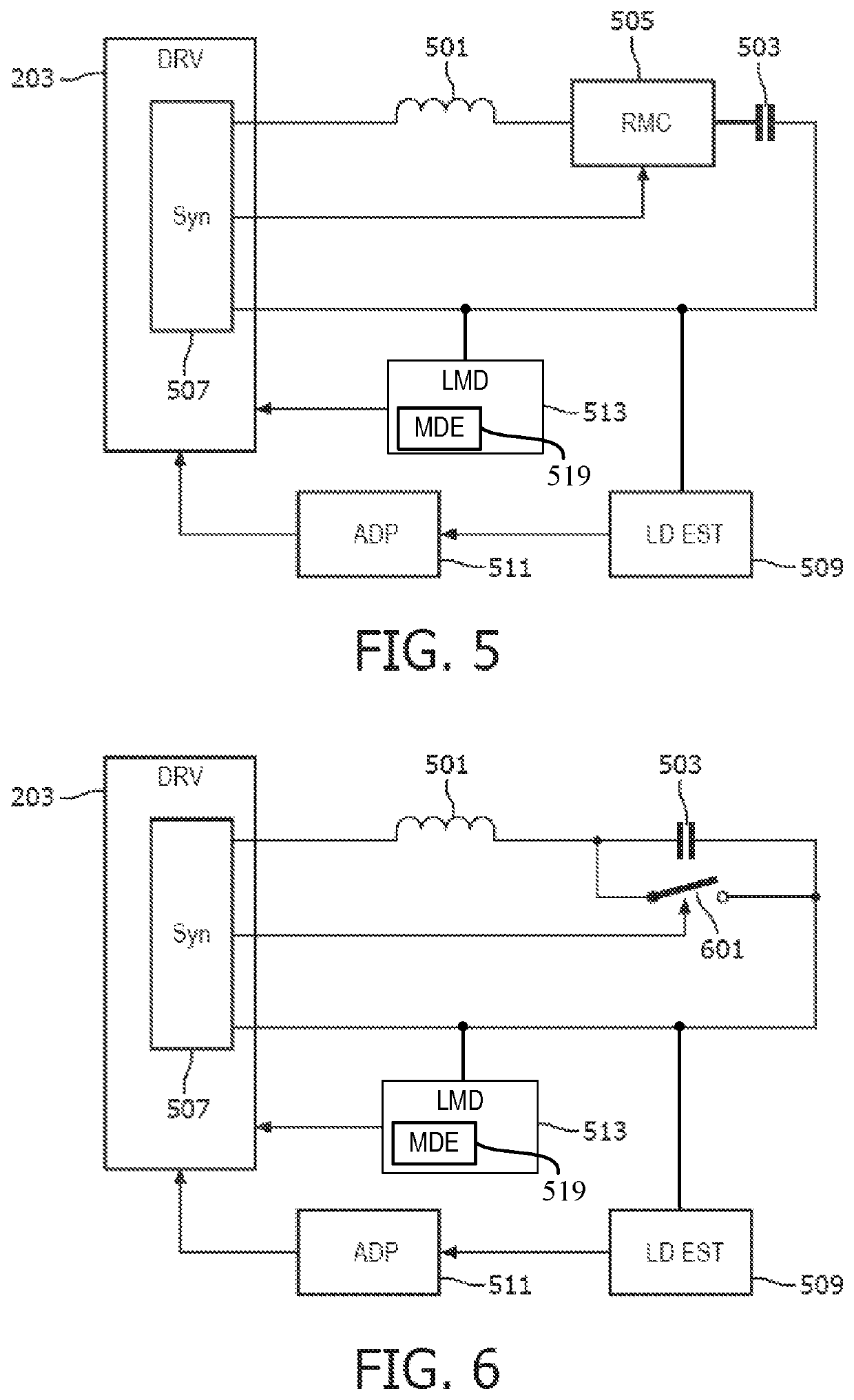Wireless inductive power transfer
a technology of inductive power transfer and wireless, which is applied in the direction of exchanging data chargers, batteries data exchange, transportation and packaging, etc., can solve the problems of increasing the weight, potential cost and size of the device, and the use of batteries, so as to reduce the resonance frequency and the effect of resonance frequency
- Summary
- Abstract
- Description
- Claims
- Application Information
AI Technical Summary
Benefits of technology
Problems solved by technology
Method used
Image
Examples
case # 1
CASE #1—Small Power Load (i.e. High Resistive Load)
[0196]As previously explained, the power transmitter has a small power load (high resistive load, e.g. 1 kΩ) during the ping and identification & configuration phases. Based on the example of FIG. 9, the drive frequency may be set around 100 kHz. Typically, the frequency difference between the natural resonance frequency of the transmitter and the drive frequency should be approximately in the range of 20-30 kHz. This corresponds to a drive frequency around the resonance frequency of the power receiver (Frx). In the example of FIG. 9, this optimum frequency range is valid for load impedances larger than 100Ω.
case # 2
CASE #2—Large Power Load (i.e. Low Resistive Load)
[0197]As previously explained, at the beginning of the power transfer phase, the power receiver connects its load. Typically, the equivalent impedance of the load can be as small as 5-10Ω. In the example of FIG. 9, the optimum drive frequency is in the range of 115-125 kHz. Thus, the frequency difference between the resonance frequency of the receiver and the drive frequency should be approximately in the range of 5-20 kHz. This corresponds to an operating frequency closer to the natural resonance frequency (Ftx) than to the receiver resonance frequency (Frx). In the example of FIG. 9, this frequency range may be valid for load impedances smaller than approximately 50Ω.
case # 3
CASE #3—Intermediate Load
[0198]Finally, during the power transfer phase, the load is not necessarily always in the range of 5-10Ω. It may often also reach large values up to e.g. 50-100Ω. In the example of FIG. 9, for load impedances in this range, it is not clear what the optimal value for the drive frequency is. A transition between the two cases (i.e. small and large load cases described above) is expected to occur at an impedance in the range of 50-100Ω. The drive frequency may in this case be set to an intermediate value, say around 110-115 kHz, or better may be continuously be adapted (possibly based on other parameters such as the modulation depth).
[0199]FIG. 11 illustrates an example corresponding to that of FIG. 10 but with the natural resonance frequency of the transmitter resonance circuit being increased to 140 kHz.
[0200]Considering this example, the drive frequency can for example first be set to 120 kHz (fopt_1=120 kHz). In this situation, a sufficient modulation depth...
PUM
 Login to View More
Login to View More Abstract
Description
Claims
Application Information
 Login to View More
Login to View More - R&D
- Intellectual Property
- Life Sciences
- Materials
- Tech Scout
- Unparalleled Data Quality
- Higher Quality Content
- 60% Fewer Hallucinations
Browse by: Latest US Patents, China's latest patents, Technical Efficacy Thesaurus, Application Domain, Technology Topic, Popular Technical Reports.
© 2025 PatSnap. All rights reserved.Legal|Privacy policy|Modern Slavery Act Transparency Statement|Sitemap|About US| Contact US: help@patsnap.com



